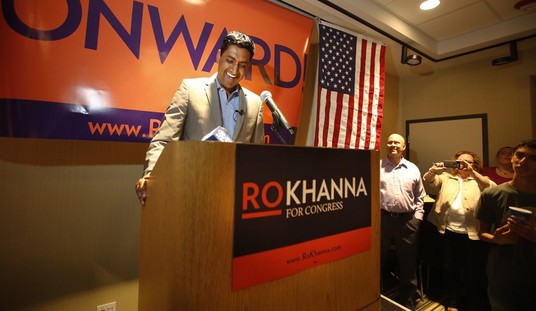They say that the perfect is often the enemy of the good. In the pursuit of perfection, California’s fiddlers and tinkerers possessed with an outsize sense of their historical significance have gone and made an imperfect but functional system worse.
Among the historically illiterate, political partisanship and vitriol in government are not only modern phenomena, but they are also the singular obstacle preventing human progress. Adherents to a bizarre theology, which holds that political polarization today is worse than it has ever been and the people’s representatives in both Congress and state legislatures are uniquely dysfunctional as a result, have undertaken to incrementally remake the nation’s electoral system.
It is this point of view that led some states, including California, to reform the reapportionment process in the hopes of removing the influence legislators have over it. In some circles, merely invoking the term “gerrymandering” serves as a substitute for an argument. Many assert that the decennial process of redistricting is hopelessly corrupt, and it has led to the frustration of the public’s desires. Don’t read too much into the fact that gerrymander reform’s popularity coincides with the decline of the New Deal Democratic coalition.
It was not long after California reformed the redistricting process by creating a supposedly impartial independent commission to oversee it that observers learned that reapportionment was still subject to manipulation.
“The citizens’ commission had pledged to create districts based on testimony from the communities themselves, not from parties or statewide political players. To get around that, Democrats surreptitiously enlisted local voters, elected officials, labor unions and community groups to testify in support of configurations that coincided with the party’s interests,” read a 2011 ProPublica report. “When they appeared before the commission, those groups identified themselves as ordinary Californians and did not disclose their ties to the party. One woman who purported to represent the Asian community of the San Gabriel Valley was actually a lobbyist who grew up in rural Idaho, and lives in Sacramento.”
Like life itself, corruption finds a way.
Formerly popular independent redistricting commissions are under assault across the country as state-level political leaders learn that these bodies are not walled off from the interests of the legislatures they seek to remake.
Similarly, the desire to fix that which was never broken has resulted in a unique electoral reform in California: A top-two primary system in which the two candidates who receive the most votes, regardless of party affiliation, advance to the general election.
“Absent the need to appease the most puritanical elements of the major parties, the thinking went, candidates would broaden their appeal to the many voters in the middle,” The Los Angeles Times reporter Mark Barabak summarized. “Voila! A more harmonious, pragmatic and productive Legislature.”
Well, something funny happened on the way to utopia.
“New academic research, published Sunday by the California Journal of Politics & Policy, found that voters were just as apt to support candidates representing the same partisan poles as they were before the election rules changed — that is, if they even bothered voting,” the report continued.
According to research published by the Institute of Governmental Studies at UC Berkeley, the new rules have not resulted in a dramatic increase in crossover voters. Fewer than 6 percent of Democrats and less than 8 percent of Republicans reportedly supported a candidate from the opposing party in the 2012 state Assembly races. Those partisans who were shut out of the general election when two Democrats or two Republicans advanced to the general election tended just to stay home on Election Day. The hapless theorists who suggested that a top-two primary system would draw in the disinterested voter were dismayed to learn that this voter continues to cling stubbornly to his disinterest. The 2014 primary in California only saw a quarter of the state’s registered voters turn out, the lowest in the state’s history.
“Proponents of the ballot measure didn’t necessarily mislead people,” Barabak concludes. “But they seem to have invested more hope than merited in the virtues of their transformative surgery.”
While this reporter correctly chides the reformers for their undue faith in their own ability to remake the American electoral system, he diagnoses the problem incorrectly. Barabak avers that this reform must “overcome” both “widespread ignorance” and “apathy among California voters” in order to be successful. This self-flattering expression of fealty to an erroneous shibboleth is precisely what gave birth to this misguided reform in the first place. Barabak had just concluded observing that voters were less apathetic in a pre-reform era and that their supposed “ignorance,” exemplified apparently in their desire to support candidates occupying the fringes of political thought, was unchanged as a result of this reform. If anything, this phenomenon was exacerbated as candidates vying for seats in partisan districts shunned unnecessary moderation in order to appeal to a smaller, more ideologically homogenous electorate.
In short, the result of California’s reforms was the precise opposite of their desired effect.
What Americans need today more than elaborate reforms concocted by academicians possessed of an absurd and meritless self-regard are more policy makers with a sense of humility and posterity. Too often, assured of their own value, the reformers overpromise and under deliver. It is with disturbing regularity that the reformer’s dream turns into a nightmare for those subjected to their whims.







Join the conversation as a VIP Member